Microorganisms in catacombs of ancient cities
XVIII. In the eighteenth century began to improve the hygienic habits of the inhabitants of the cities and proliferated toilets and cleaning tools. These, of course, used water and, therefore, in a short time wastewater increased spectacularly. The sewers were scarce and unfunctional and the authorities invented alternatives for waste management. However, they were not very environmentally friendly.
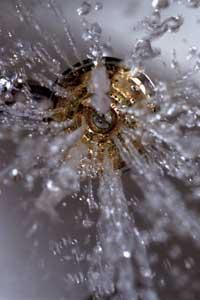
Urban waste was initially deposited in pits. Once filled the sinks were collected in tanks and deposited in landfills built outside the cities. The residues, especially solid, were easily dried and the dry sediment was used as excrements. XIX. At the beginning of the 20th century, however, the urban population increased considerably, the volume of wastewater multiplied enormously and the garbage went from solid to liquid.
Landfills
did not have the capacity to absorb all that water and immediately became large sludge. The volume of wastewater increased steadily, conventional landfills did not serve and authorities required an urgent solution. The most sensible thing was the construction of a sewer that, in fact, began to build in the cities. But in those years a provisional measure was also launched.
Artesian wells
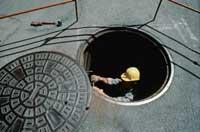
Artisan
wells have been used since ancient times to obtain drinking water, digging and extracting water to the aquifer. XVIII. In the 20th century they were used to evacuate urban wastewater. The wells were made at a depth of between 150 and 200 meters, attached to a bag of groundwater, and perfectly absorbed the dumped remains. Because the first wells performed well and no disease was generalized in the short term, new drilling was immediately performed. In a few years the provisional solution took root throughout Europe.
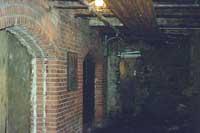
On the
one hand, geology was unknown and consequently the murmurs multiplied; for example, it was not taken into account that groundwater bags are not isolated and have leaks. Leaks allow wastewater access to lakes, rivers and other bags and contaminate drinking water. This, in addition to having ecological consequences, can cause diseases and pests due to the presence of pathogenostack in wastewater.
However, even though
they did not know the dynamics of groundwater well, the authorities knew that wells could cause health problems, but nevertheless they were built. In fact, drilling two or three wells was cheaper than building sewers. Irresponsibility and irreverence therefore had much to do with the wells. The authorities, however, protected themselves well and falsified and destroyed the documentation relating to the treatment of wells and wastewater. In the archives there are hardly any official references and if you read period writings, it seems that the wells were never built. Therefore, knowing where they are is almost impossible.
The city of light
The
study of the wells was carried out by the researcher Sabine Barles of the VIII University of Paris. For years, almost as a detective, the XIX. He has researched what they were doing in Paris in the 20th century with wastewater and thanks to it he has been able to clarify something about the dark history of wells.
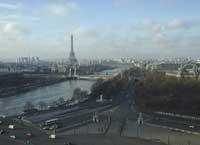
XIX. Paris in the early 20th century was a waste city. In 1797 51 cubic meters of wastewater were produced daily and 38 years later the volume multiplied by six, that is, by 1835 it was necessary to manage 350 cubic meters of dirty water daily. All urban waste was emptied into the Montfauco landfill and when it overflowed, Bondy was built in 1818. But in 1832 the Bondy landfill was already a mud full of dirty water. The landfill was also very close to the Ourcq regatta, which transported drinking water to Paris, which posed a high health risk. The excavation of the firm was considered a fortunate solution by the authorities, building a well 70 meters deep at the bottom of the landfill.
Bondy's
well was the first in Paris but not the last, as two others drilled in the same decade. The latter had an absorption capacity of 100 cubic meters of water per hour. Sada Prefecture appointed the commission that declared the wells safe and the authorities unanimously approved the decision. The wells were cheap, with a large waste absorption capacity and aesthetically were better than landfills. The public hygiene report, published in 1835, did not admit the construction of this type of wells in the cities, but their statements remained empty; although the authorities did not publicly defend the wells, they built them one after the other.

Although it is impossible to prepare the census of wells that were built at
that time in France – most reports disappeared in the air – there are still enough documents to make an approximate idea: In the hydrological chart, made in 1862, 14 wells appear around Paris and the documents of the drilling company Lippman indicate that in the 1833 and 1893 season 70 wells were built. Based on this scarce but significant data, Sabine Barles has concluded that several wells were dug in France.
The French government established the Public Health Law in 1902 and prohibited the drilling of absorption wells, except in specific cases. But the damage was already done, and instead of seeking solutions and doing something with the old wells, like the ostrich, he kept his head in the sand, arguing that there was no documentation about the wells and that these had never been done.
Biological pump
As soon as the well of Bondy was launched in Paris, there was a terrible plague of anger. Because of the well? Forces.These Greek wells can now be a source of disease. Microorganisms and pathogens in wastewater may have died for 200 years, but if living conditions have been favorable, it may have increased considerably. Survival in wells full of organic waste would not be surprising. On the other hand, the ability of microorganisms to survive in very demanding conditions cannot be forgotten. In the probe left on the Moon, bacteria have survived trapped for centuries in mineral layers or nuclear reactors. Then, when the environment becomes favorable again, they wake up without problems.
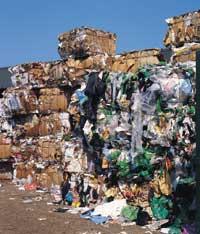
But once the wells were closed and the sites "forgot" and today it is almost impossible to know where these old wells are. However, subcities are not particularly quiet places: they are underground car parks, the expansion of the pipeline network, the foundation of the new building, the construction of the metro, etc. The works are continuous in the subsoil. Any of them can by chance find a well and then what can happen? One knows. There is nothing, there may be a disaster.
Published in the supplement Natura de Gara
Buletina
Bidali zure helbide elektronikoa eta jaso asteroko buletina zure sarrera-ontzian











